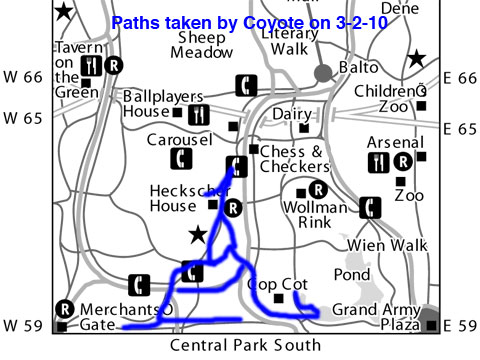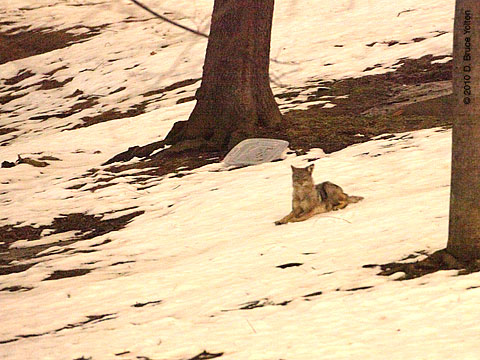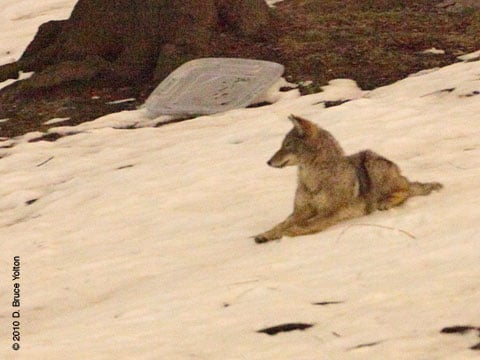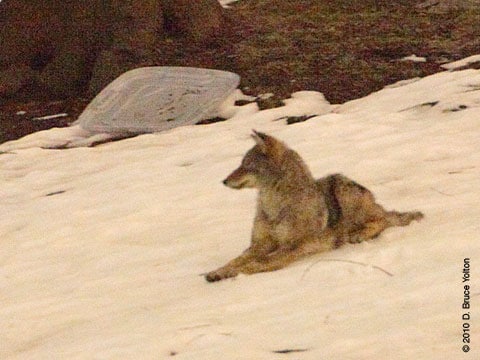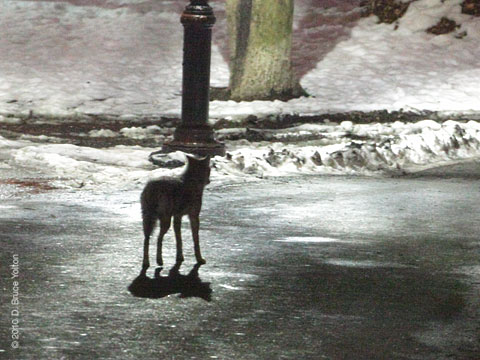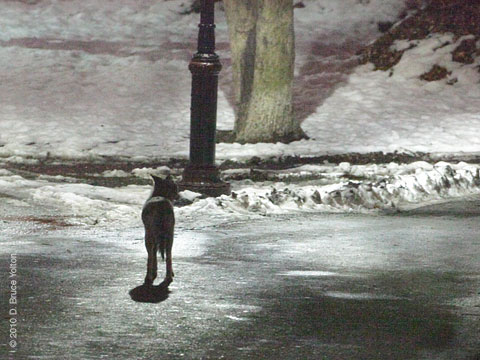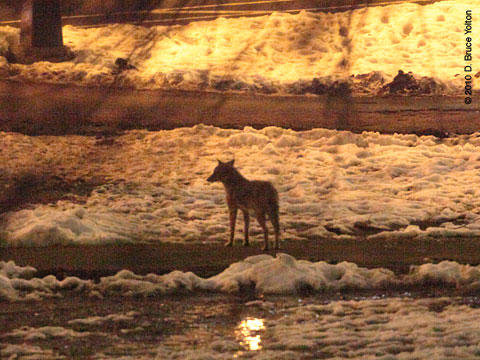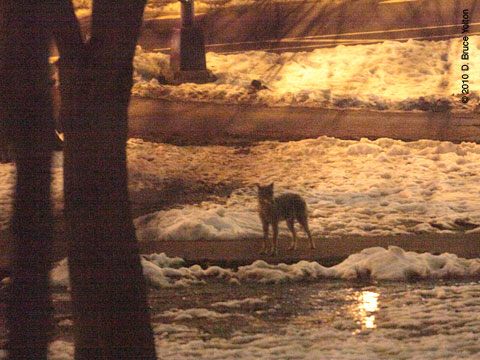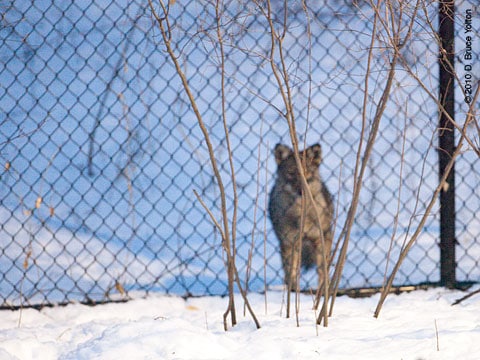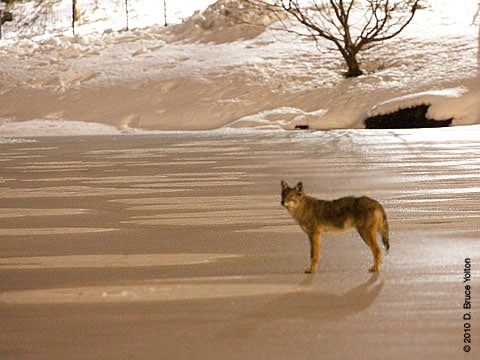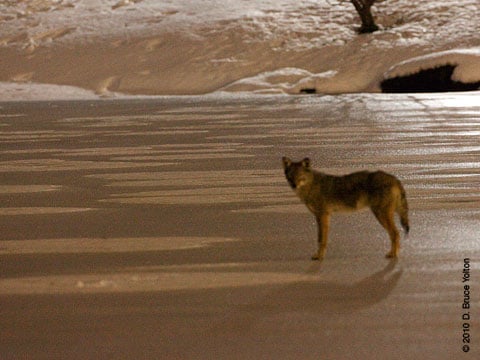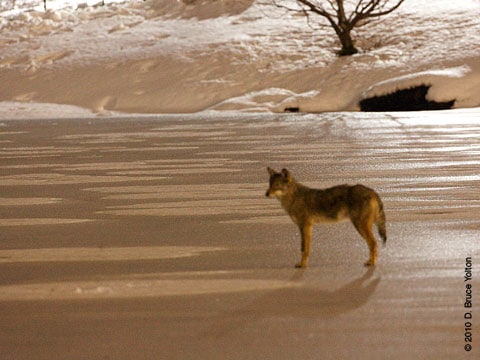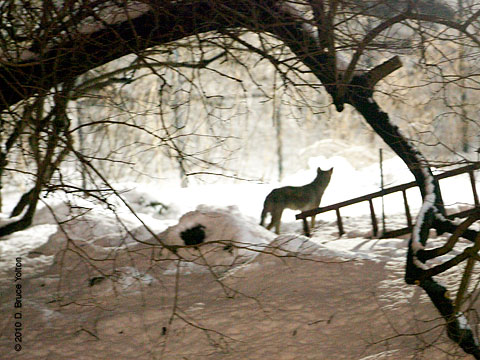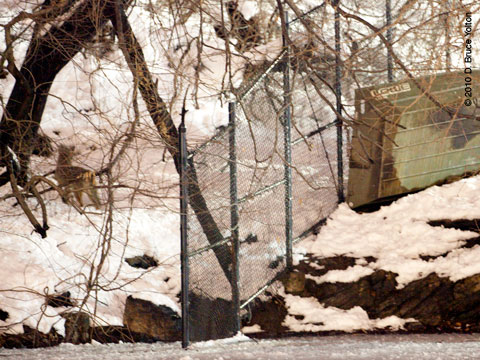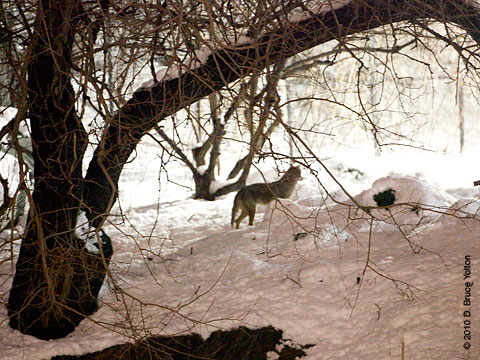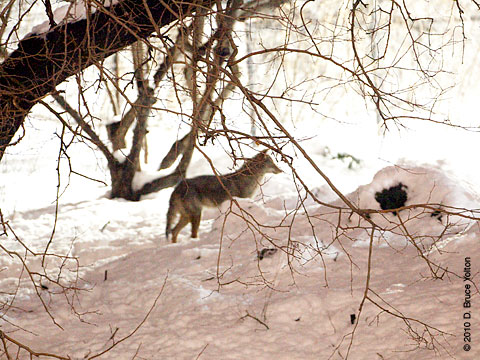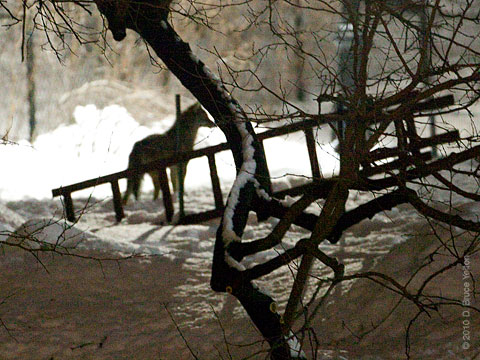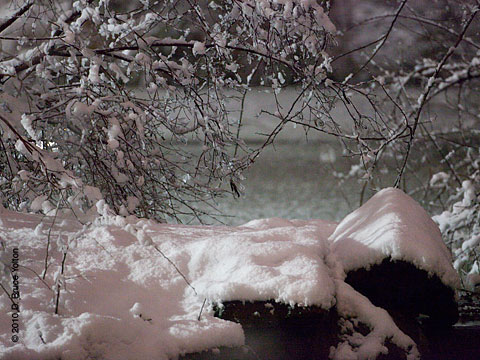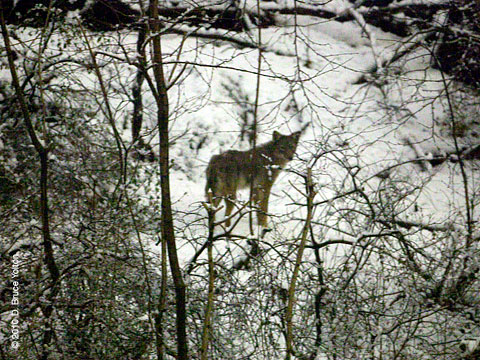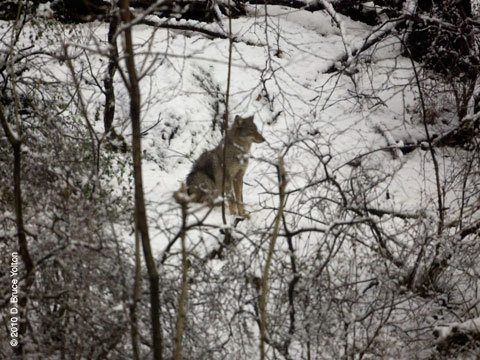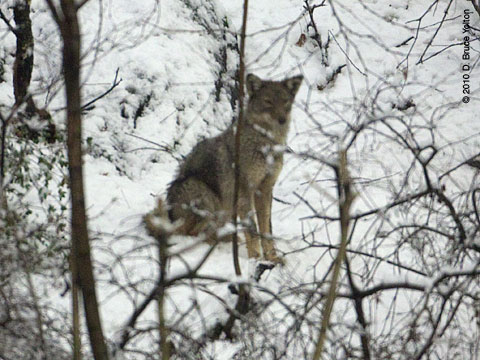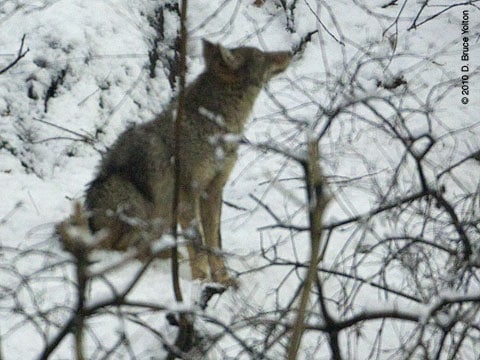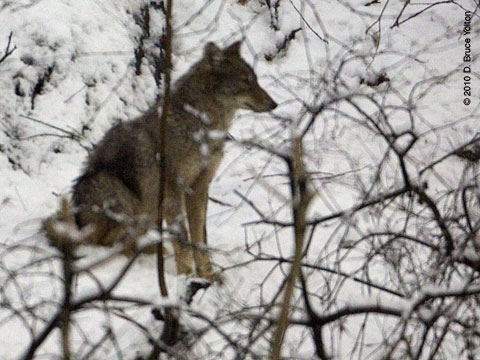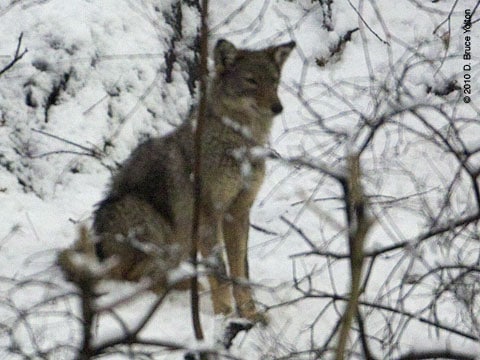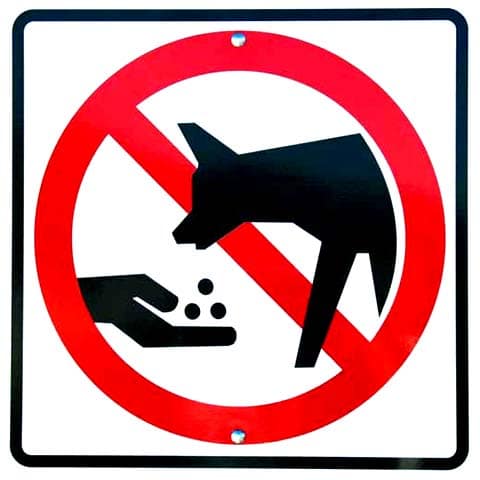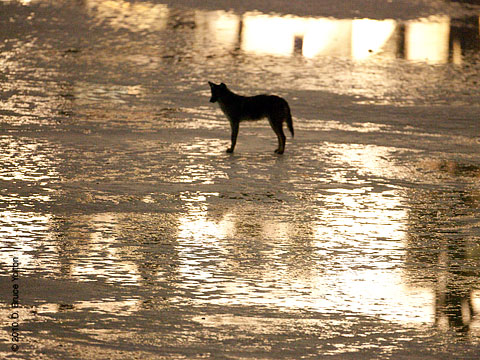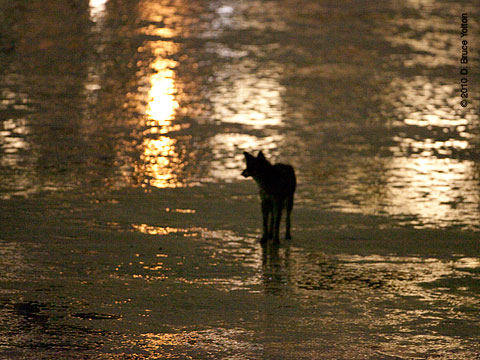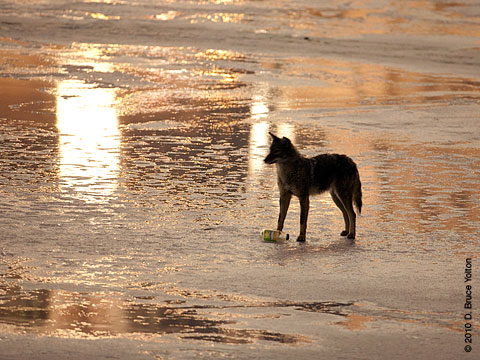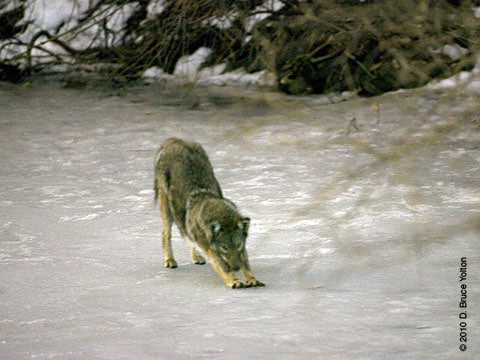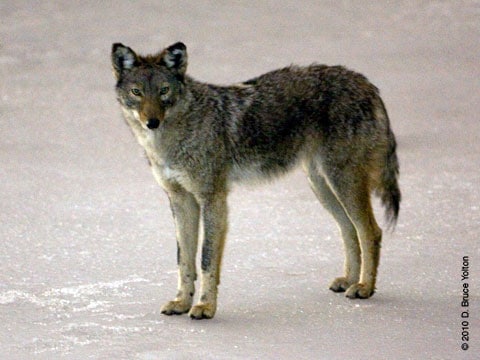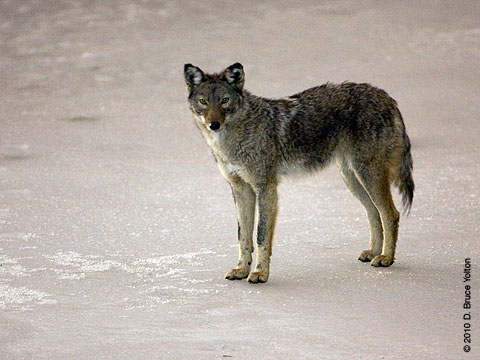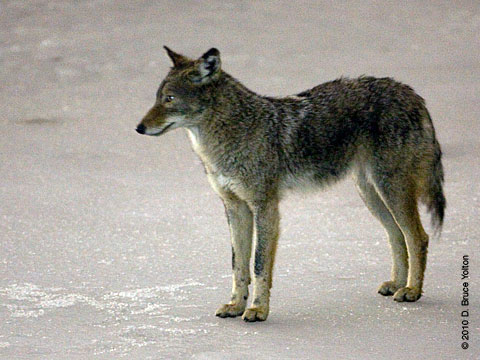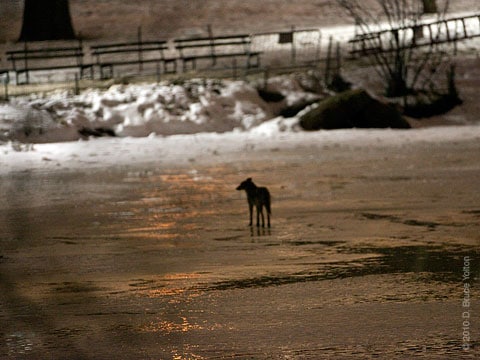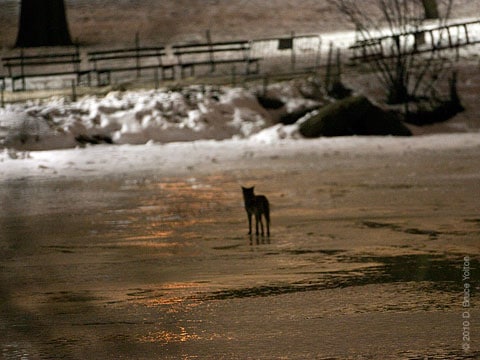Coyote Outside The Hallett/Pond Area
Tonight, I got to follow the coyote outside of the Hallett Sanctuary area. Out of the corner of my eye, I saw the coyote leave the southern exit of Hallett, jump onto the path and go up the stairs towards Sixth Avenue. I couldn’t see where the coyote went, but assumed it was up to Cop Cot, so I followed up that path.
In the winter from Cop Cot, you can see a good distance, and I was able to see the coyote south of the playground. It moved around a great deal. It spent most of its time trying to stay away from people. The coyote must enjoy 1 a.m. when the park is closed!
While I was keeping track of it, a woman stopped in the road with a confused look on her face. There was a loose black Lab. which I thought was hers. I said “Is that your dog?” She said “No, but there is a dog without an owner over there.” I said “That’s a coyote.” She said, horrified, “Oh my God, it eats cats and dogs. Do you want me to call 911?” I said “No, the Parks Department already knows it’s here.”
For at least five minutes, I kept asking myself who thinks there are pet cats in Central Park? Did she think the wealthy on Central Park West and Fifth Avenue have their doorman put their cats out at night?
